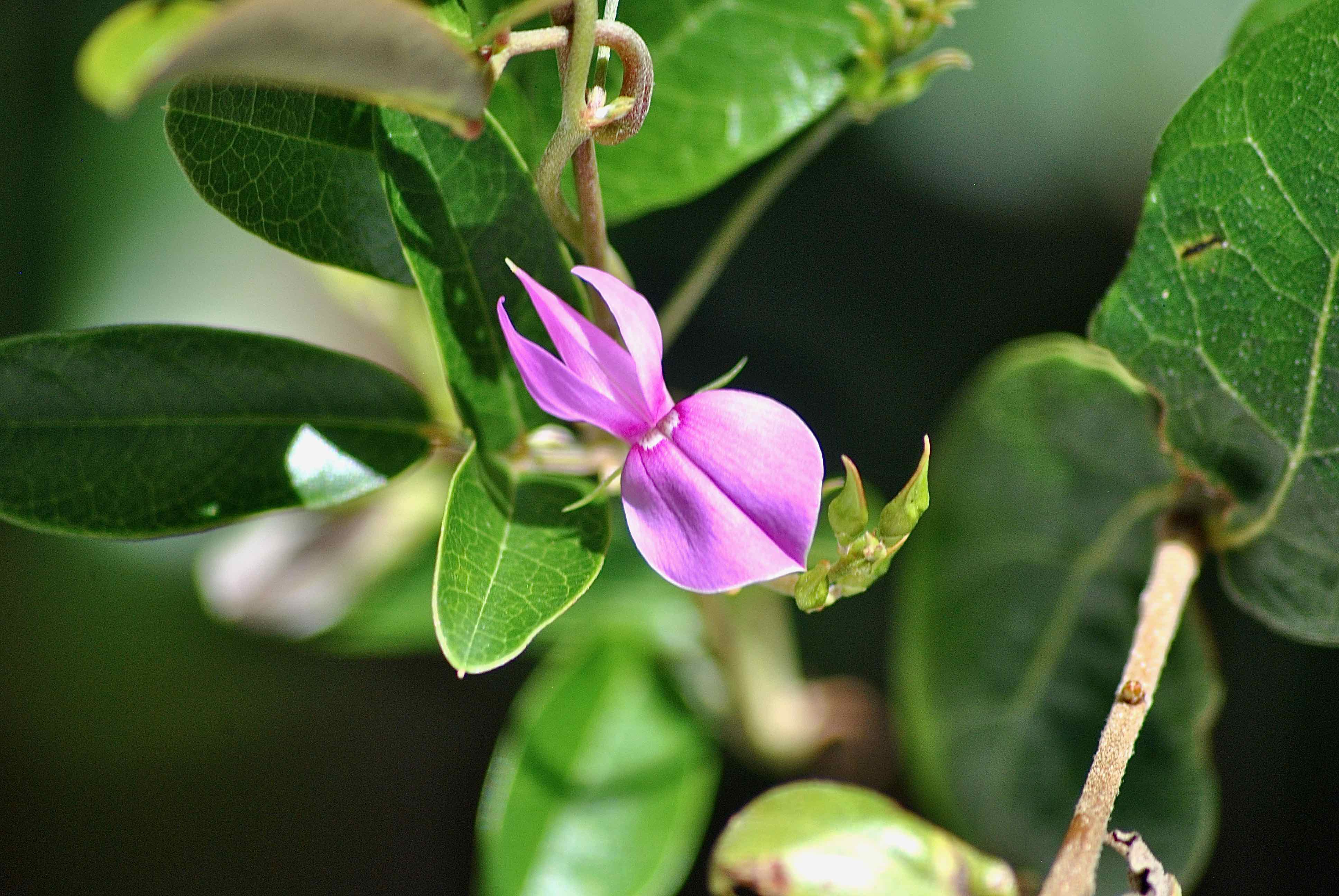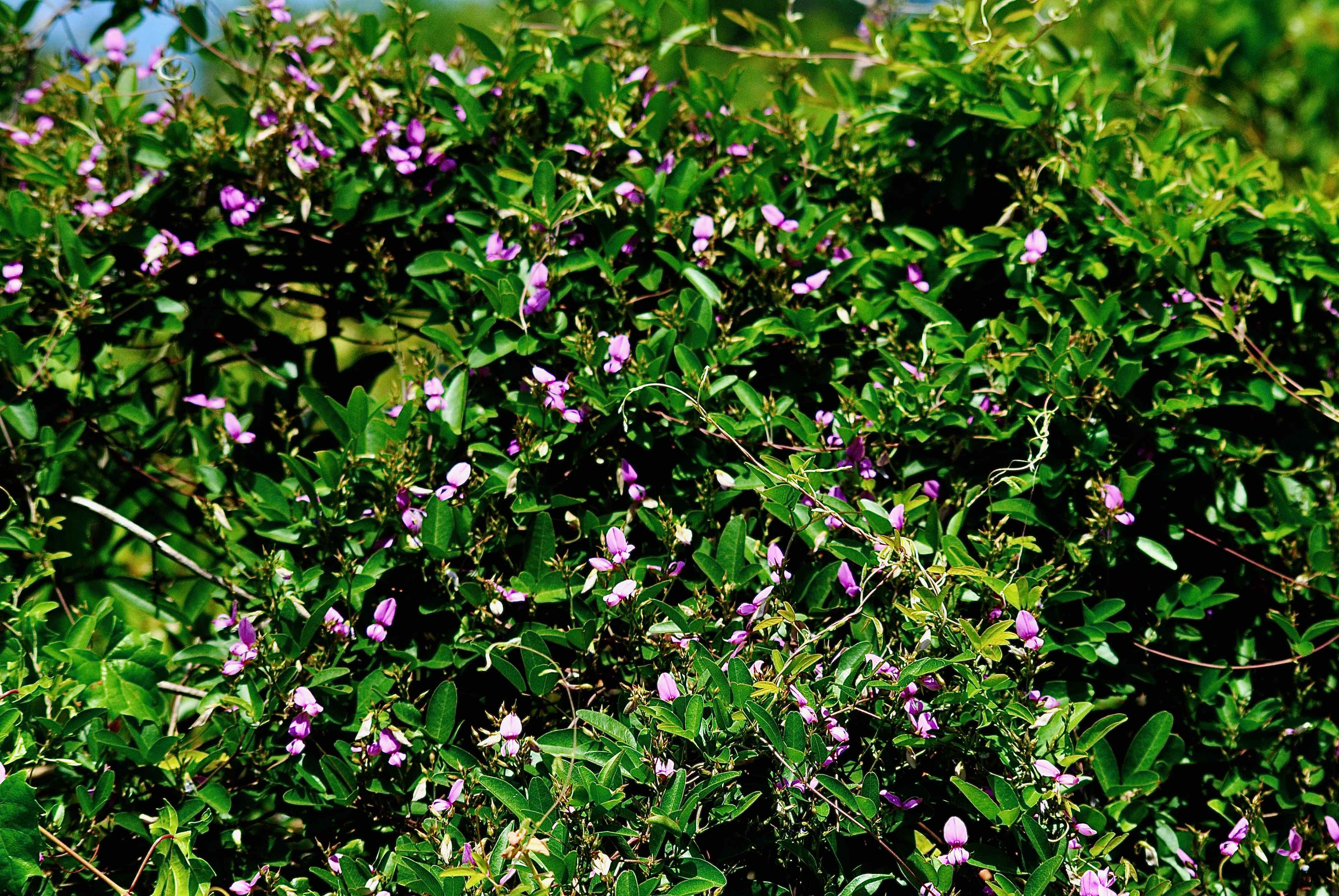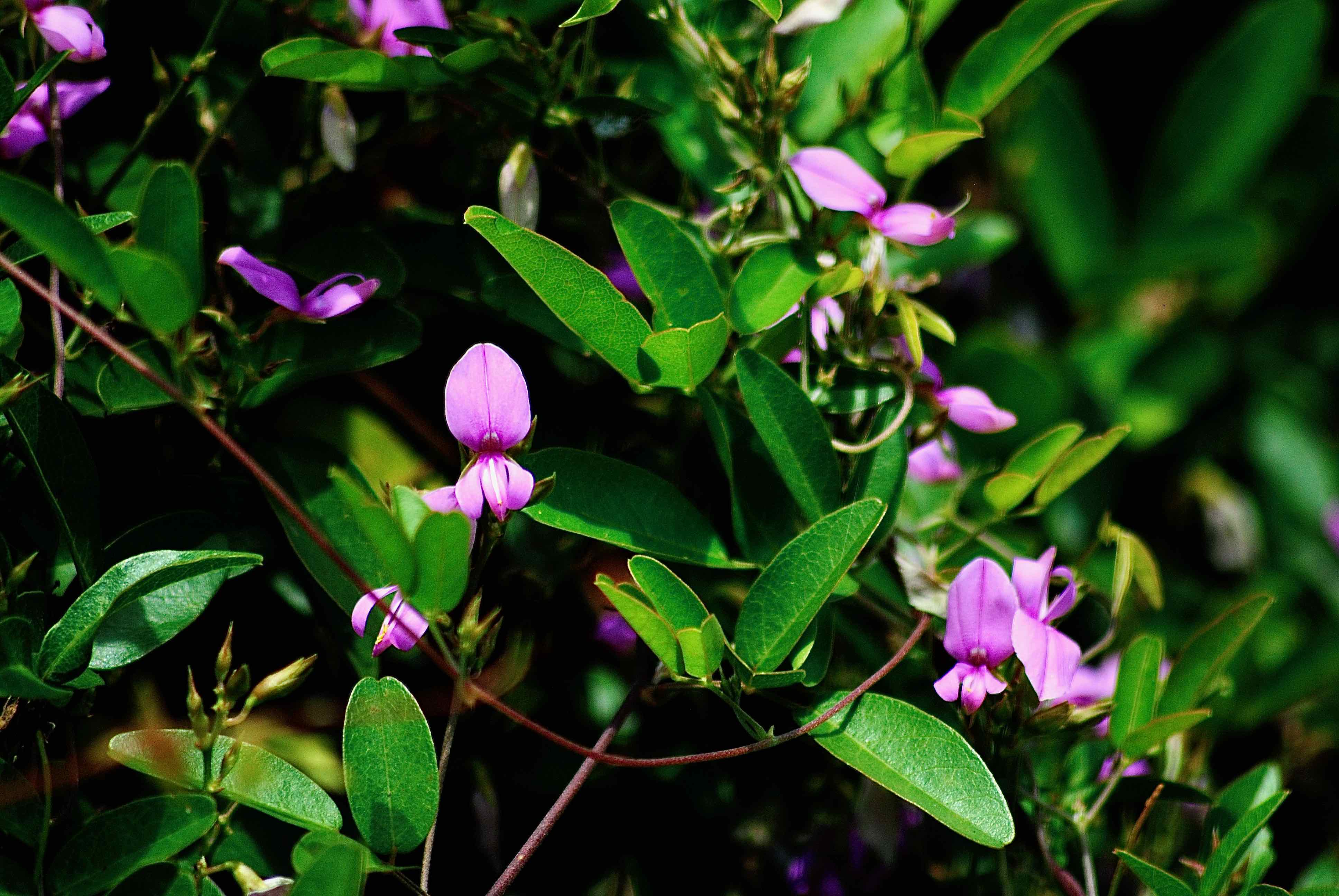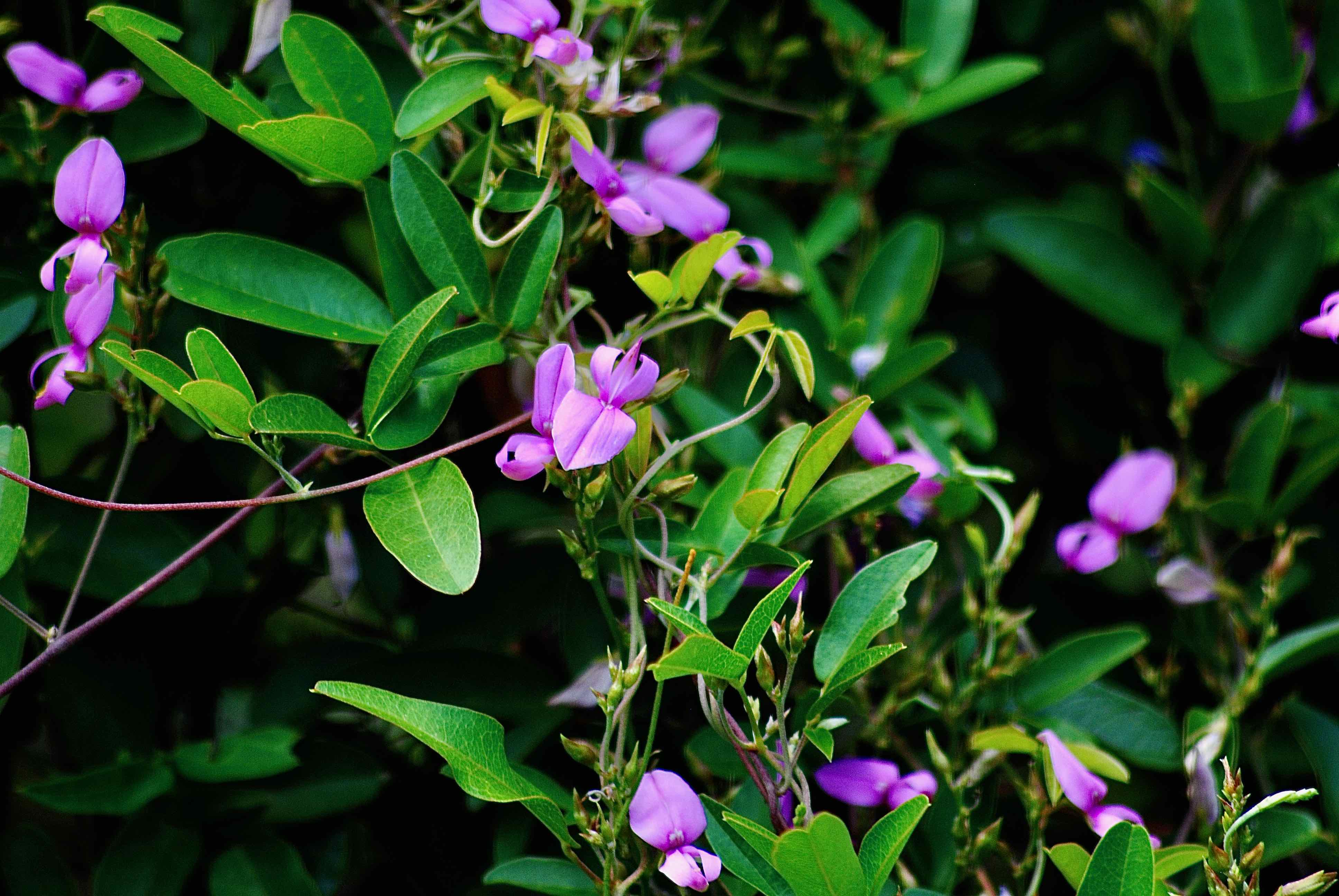
Milk pea, photographed at Rosemary Scrub Natural Area, Boynton Beach, Palm Beach County, in July 2013. Others at Yamato Scrub Natural Area.
For some reason, the flower of downy milkpea, Galactia volubilis, reminds us of Crow T. Robot, the mechanical character from Mystery Science Theater 3000. But then, the flowers of most milkpeas look like Crow T. Robot, at least to our eyes.
There are something like 10 species of milkpeas found in the wilds of South Florida. By far, downy milkpea is the most common and widespread of the bunch, at least in our neck of the woods. Downy is a Florida native found throughout the Sunshine State. Its native range covers most of the eastern and central United States as far north as New York and as far west as Kansas, Oklahoma and Texas. While it's common here, it's quite rare in parts of its territory. New Jersey classifies it as endangered; Ohio as threatened. It's likely extinct within the borders of Pennsylvania. According to the distinguished naturalist, Roger Hammer, downy milkpea's range extends into the Caribbean.
Milkpeas generally are difficult to identify and classify because they look so much alike. Elliott's milkpea when in bloom is an exception because it is the only milkpea in Florida to have a white flower. Geography can be a help or a hinderance in identifying downy milkpea, because some of milkpea species are rare and restricted to specific areas or habitats. Downy milkpea is a short vine, perhaps three or four feet long, that twines on its neighbors for support. It is a perennial, blooms are all year but mostly in the spring and summer. In colder places, it blooms spring through summer.The flowers are small, less than three-quarters of an inch across, mostly pink with some white, especially near the throat. Leaves are compound, with three leaflets, the middle leaflet longer than the other two. The fruit is a pod.
Its twining habit and the size of the leaves help distinguish downy milkpea from the similar looking eastern milkpea, G. regularis, which generally trails rather than twines. We've seen downy milkpea referred to as eastern milkpea. Two other milkpeas, pineland and Small's, are sometimes classified as subspecies of downy. Both are pretty much restricted to Miami-Dade County.
Favorite habitats include dry, open woodlands, pinelands, hammocks and thickets. It is drought tolerant and likes full sun to light shade. It's used in natural landscapes and restorations and in butterfly gardens. Downy milkpea is a host plant for the cassius blue and ceranus blue butterflies, the gray hairstreak and a few others. It provides cover for animals; some graze on the vegetation.
The Seminoles widely used downy milkpea medicinally, especially the root. They made an analgesic, or pain reliever, from it and used it to treat the "sickness caused by adultery," as well as headaches and sore body parts. The roots were to used to treat vomiting and diarrhea in babies, to help stimulate appetites and to help induce breast feeding. An infusion of the roots was used internally and externally for women in protracted labor.
Milkpeas get their name from their milky sap. Galactia is ancient Greek meaning milk yielding. Volubilis is a reference to downy milkpea's twining habit. Downy milkpea is a member of Fabaceae, the pea family.



